Strategically located at the center of the vast Asia-Pacific region, Malaysia is the perfect location for the FWC 2017. It is a renowned tourist destination in Asia, boasting a multicultural society living in a blend of old and new world charms. The political climate is stable, the economy robust. The government actively promotes Malaysia as a destination for international conventions and tourist attractions, and this guarantees ease of passage for delegates entering the country. Malaysia’s competitive currency exchange rate gives good value for money returns to its international visitors.
The KLCC is an iconic landmark listed within the most visited tourist destination in Kuala Lumpur simply because the area is made up of multiple attractions including the Suria KLCC Shopping Mall, which hosts an array of international brands, cinema, two food courts, an art gallery, restaurants and concert hall, KLCC Park, the massive Aquaria KLCC, an expansive manmade park with a jogging track, walking paths, water fountains, and a wading pool for children and of course the magnificent Petronas Towers. In addition, the KLCC is a sophisticated tourist destination that is conveniently accessible through Light Rail Transits to avoid all the traffic congestion in the city.
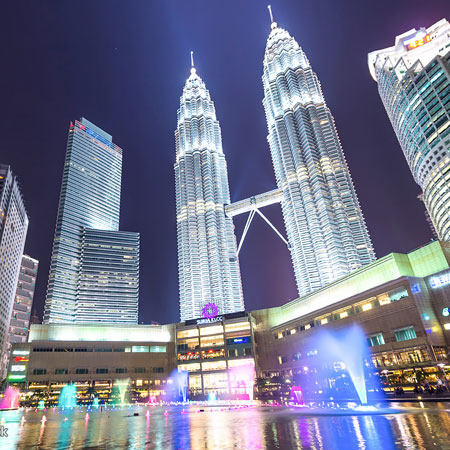
Standing atop the Bukit Nanas Forest Reserve, the 421m-high KL Tower is one of the world's tallest structures. Officially known as Menara KL, it has been outshone by the Petronas Twin Towers but remains an important architectural marker and boasts spectacular views of the city. The viewing deck is at least 100 meters higher than the Petronas Tower’s Sky bridge.
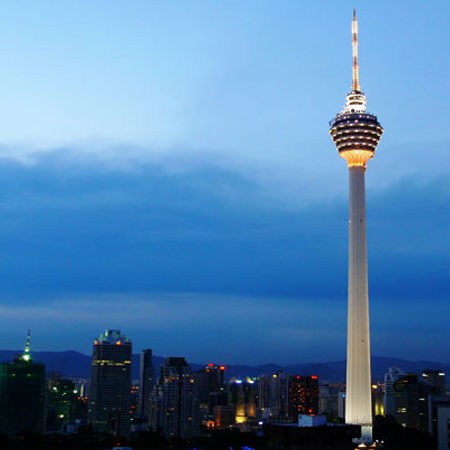
Batu Caves, one of Kuala Lumpur’s most frequented tourist attractions, is a limestone hill comprising three major caves and a number of smaller ones. Located approximately 11 kilometres to the north of Kuala Lumpur, this 100-year-old temple features idols and statues erected inside the main caves and around it and with 272 steps to climb to the top of the caves. Incorporated with interior limestone formations said to be around 400 million years old, the temple is considered an important religious landmark by Hindus.

The colourful Chinatown is a well-known bargain hunter’s paradise that seemingly never sleeps. Deeply immersed in Oriental culture, heritage and history, it is undoubtedly one of the most popular tourist spots in Malaysia, and holds its own against its more glamorous neighbours, KLCC & Bukit Bintang. Representing Malaysia’s multihued multicultural background perfectly, you can find all sorts of stuff, from Chinese herbs to imitation goods in this area.
But besides the Petaling Street, there are also quite a number of shopping centres around Chinatown such as the touristy bazaar called ‘Central Market’ or (Pasar Seni) serving the area, which offers plenty of good bargains within its walls and many souvenirs that you can get from here, Central Market Kuala Lumpur is a centre for Malaysian culture, art and craft located in the heart of the city.

The Merdeka Square or Dataran Merdeka is a place of history. You could find many of the great history events that took place in Kuala Lumpur here. One of which is the lowering of the Union Flag performed here on August 31st, 1957 when independent Malaysia was born. Attractions include Saint Mary’s Cathedral, Royal Selangor Club, Sultan Abdul Samad Building, Central Market, National History Museum and the Kuala Lumpur Gallery, which has a miniature display of Kuala Lumpur City and the I Love KL Icon for photos

The Lake Gardens are listed within the most visited tourist destinations of Kuala Lumpur because of its popularity as the city’s biggest and most visited park, with a large lake at its centre where boats can be hired. Attractions of the Lake Gardens include the Bird Park, Butterfly Park, Orchid Garden, National Planetarium, National Monument and the Carcosa Seri Negara.

The Islamic Arts Museum is easily one of the best places to visit in Malaysia to learn about Malaysia’s rich and diverse heritage it is Southeast Asia’s largest museum devoted to Islamic art. The museum boasts beautiful galleries exhibiting Chinese, Indian, and Islamic ceramics, weaponry, art crafts, metal work, and precious metals. Top exhibits in the museum include fragment manuscripts of the Qu’ran, dagas dating from the 8th and 12th centuries, ancient Chinese wares, and a scale model of Mecca’s Masjid al-Haram.
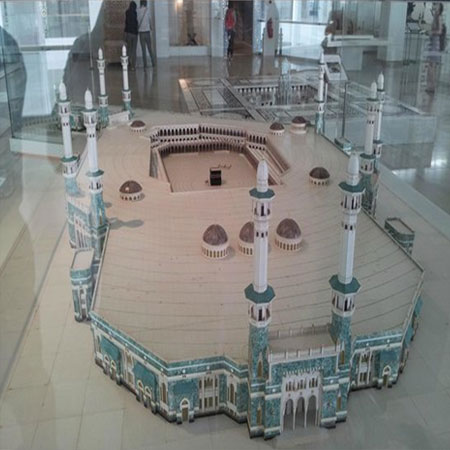
Visitors to Thean Hou Temple will find a little bit of China in Kuala Lumpur, since it is one of the largest Chinese temples in Southeast Asia. Opened in 1989 by Malaysia’s Chinese community, it is a stunning example of Chinese architecture, with its four levels of orange-tiled pagodas. The temple honours Thean Hou, the goddess of the sea. With a spectacular view of Kuala Lumpur as a backdrop.

Bukit Bintang is one of the most popular tourist attractions in Kuala Lumpur, perhaps because travellers like to shop. Bukit Bintang is the city’s shopping and entertainment centre. Here, travellers will find tiny shops and shopping malls where goods in all price ranges are sold. The area has lots of places to eat, from sit-down restaurants to street food vendors, including one street that only serves Chinese food which is Jalan Alor, also called the cultural heart of the city’s local cuisine.

The Kuala Lumpur Craft Complex or Kompleks Budaya Kraft is listed in the most visited tourist destination in Kuala Lumpur because it’s one of the rare places in Malaysia that showcases authentic locally made handicrafts. Moreover, the complex acts as a centre that collects all the fine arts and handicrafts from all over the country including those from the Borneo Island. Therefore, it’s definitely a must-go place for serious art and handicraft lovers.
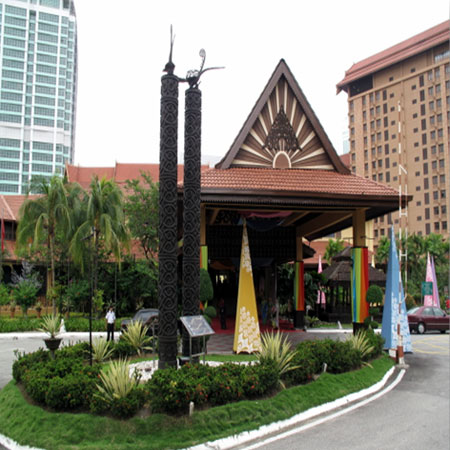
Langkawi is a beautiful island in the north-western part of Peninsular Malaysia; many people describe the island as one of the most beautiful islands in the world. The island is not spoiled by tourists, which makes it a perfect holiday destination for travellers. The island is especially renowned for the many great attractions. Langkawi offers breath-taking scenery with its beautiful beaches, incredibly fine sand, crystal-clear water and coastal mangrove swamps. The inland areas are no less striking: the tropical jungles are thick with luxuriant vegetation and extremely rich in and will impress nature lovers looking for a pristine, largely untouched rainforest. Besides that, you can shop at some of the shopping malls, you can have splendid dinners at one of the many hawkers, or you can rent a motorcycle (moped) to explore the island. The island is easily accessible from Kuala Lumpur or the neighbouring island of Penang.

Sea lovers planning to visit Malaysia should put the Perhentian Islands on the top of their list of places to see. This is a small archipelago with two main islands – Besar, the bigger, and Kecil, the smaller; both boasting splendid beaches, white sand, an amazingly blue, shallow sea and the shadow of tall palm trees. Apart from tourists, the islands are mostly uninhabited, making them a perfect place to disconnect and take a break from the hustle and bustle of modern life.
The Perhentian Islands are especially recommended to those who enjoy the sea not just for a swim, but also for water activities such as canoeing, scuba diving and snorkelling. The islands are fringed by a coral reef, and the underwater life is rich with sea turtles and many species of tropical fish.

Located in the Strait of Malacca off West Malaysia’s north-western coast, Penang Island is a popular tourist destination due to its historic George Town and rich culinary diversity. Its position along one of the world’s most travelled shipping routes has infused Penang with a colourful array of cultures, architecture and cuisine. No visit to Penang would be complete without a trishaw ride or walk around the island’s capital city, George Town, to see its British colonial architecture and historic Chinese and Indian temples

Famous for its extraordinary limestone karst formations and phenomenal cave systems, the Gunung Mulu National Park is one of the most awe-inspiring natural attractions in all of Southeast Asia. Located in Malaysian Borneo in the Sarawak State, this national park features some of the largest and longest cave systems in the world. Included in these is the world’s largest cave chamber, the Sarawak Chamber, which is estimated large enough to hold 40 Boeing 747 aircraft.

Commanding an important position on the busy sea route between India and China on West Malaysia’s southwestern coast, Melaka was ruled and battled over for centuries between Indian, Portuguese, British and Dutch governments. As a result, this modern day Malaysian city is now one of the best places to visit in Malaysia packed with architecture, culture, traditions and cuisine all reflecting its rich heritage. The Portuguese Settlement in Melaka is charactised by charming villas and the remains of an old fort while the Dutch district features some of the oldest Dutch architecture in the East.

Kota Kinabalu National Park is Malaysia’s first World Heritage. Designated by UNESCO in December 2000 for its ‘outstanding universal values’, the park covers an area of 754 square kilometers and surrounds the majestic Mount Kota Kinabalu, the tallest mountain in Malaysia (and fourth tallest in Southeast Asia). The hiking of Mount Kota Kinabalu up to the Low’s Peak ‘summit’ at 4100 meters is the goal of many trekkers. If climbers wish to go further up, the climb is on bare granite rock. The Rafflesia plant, which has the largest single flower in the world, is also found in the Kota Kinabalu National Park.
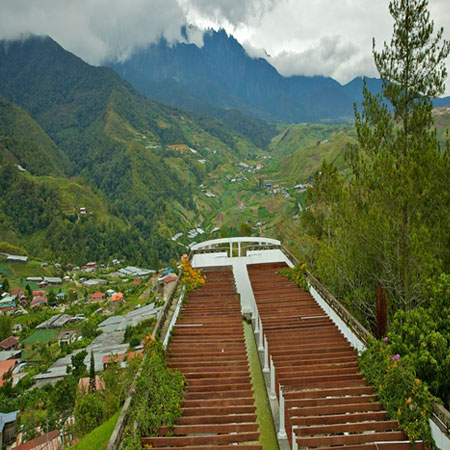
Encompassing three states across the northern part of West Malaysia, Taman Negara is reputed to be the oldest tropical rainforest in the world. A popular ecotourism and adventure destination, this national park is teeming in in wildlife from rare plants to exotic birds and scarce animals like the Malayan Tiger, Asian elephant and Sumatran Rhinoceros. One of the most popular things to do in Taman Negara is the Canopy Walk, a long suspension bridge high above the treetops where visitors can walk and glimpse exotic birds. Guided night safaris are also available to see plants that only bloom at night, glow-in-the-dark fungi and nocturnal creatures like owls, leopard cats and water dragons.

Providing a cool escape from the heat of the lowlands, the Cameron Highlands in the Titiwangsa Mountains are one of Malaysia’s oldest tourist destinations. Developed with an English garden charm, this beautiful tableland offers lush scenery, forests, lakes, wildlife and outdoor recreation. As Malaysia’s chief tea and flower producer, the Cameron Highlands also abounds in sprawling tea plantations and colorful flower farms. Many of these establishments are open to the public. Several pictorial golf courses are available for golfers.

The river Kinabatangan runs through the state of Sabah in Borneo. Alongside the river, many different exotic animal species can be spotted from out of a small boat. A Kinabatangan river cruise is a great way to explore the inlands of Sabah. This region in Sabah is probably one of the best places to spot animals, birds, insects and many plant species in all of Southeast Asia.

Genting Highlands is an integrated resort development comprising hotels, casinos and a theme park in Pahang, perched on the peak of Gunung Ulu Kali at 1,800 meters high. Nestled near the border of Selangor within an hour's drive from Kuala Lumpur (about 35km), Genting Resort presents a popular weekend getaway from the city heat. On a clear day, the peak overlooks lush valleys of rainforest stretching towards KL, a breath-taking view for visitors as they enjoy the cooling weather and serene mountain environment. It is the one stop entertainment, hotels and the only casino in Malaysia, all on top of a mountain over 5,00o feet from sea water level.
